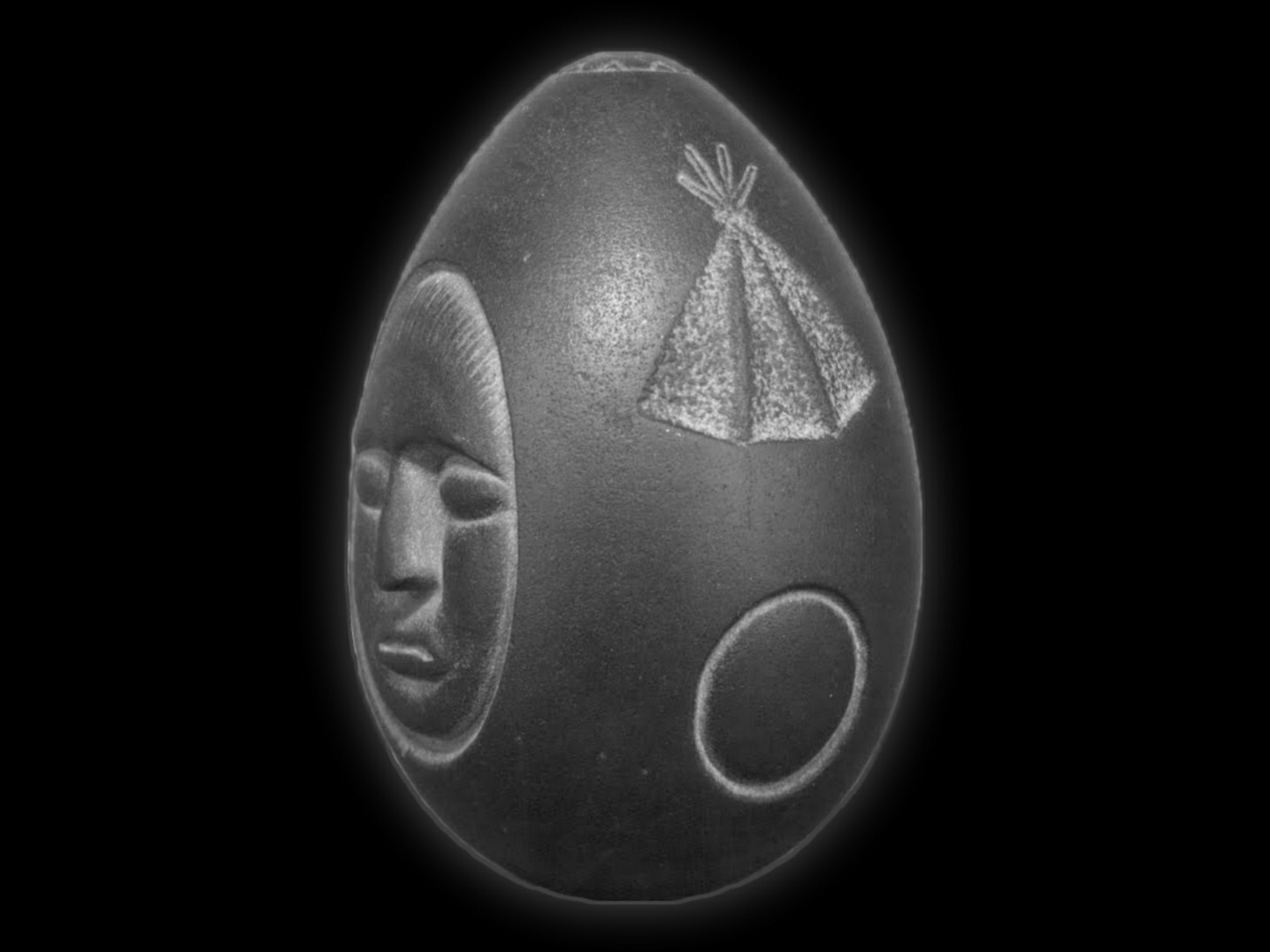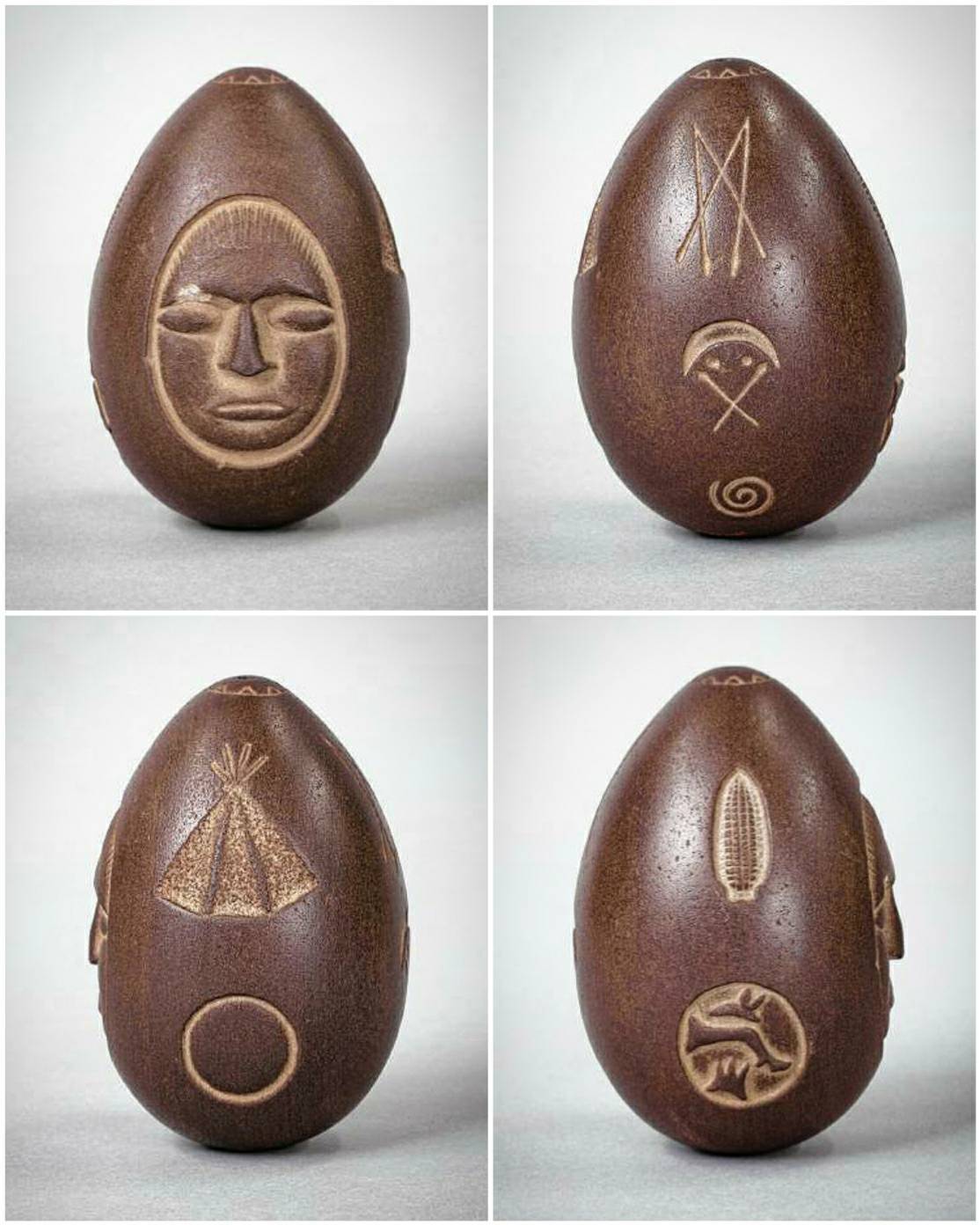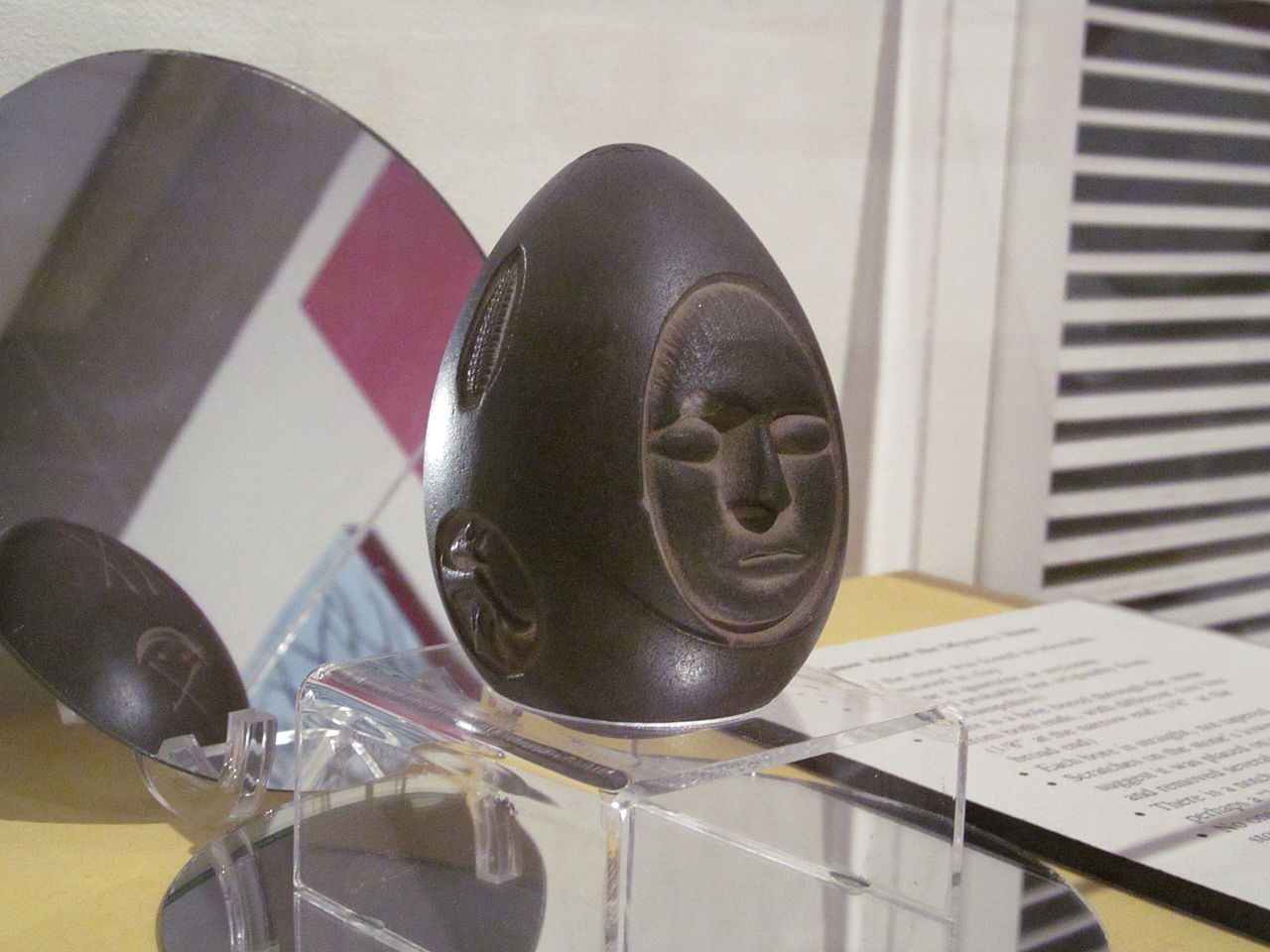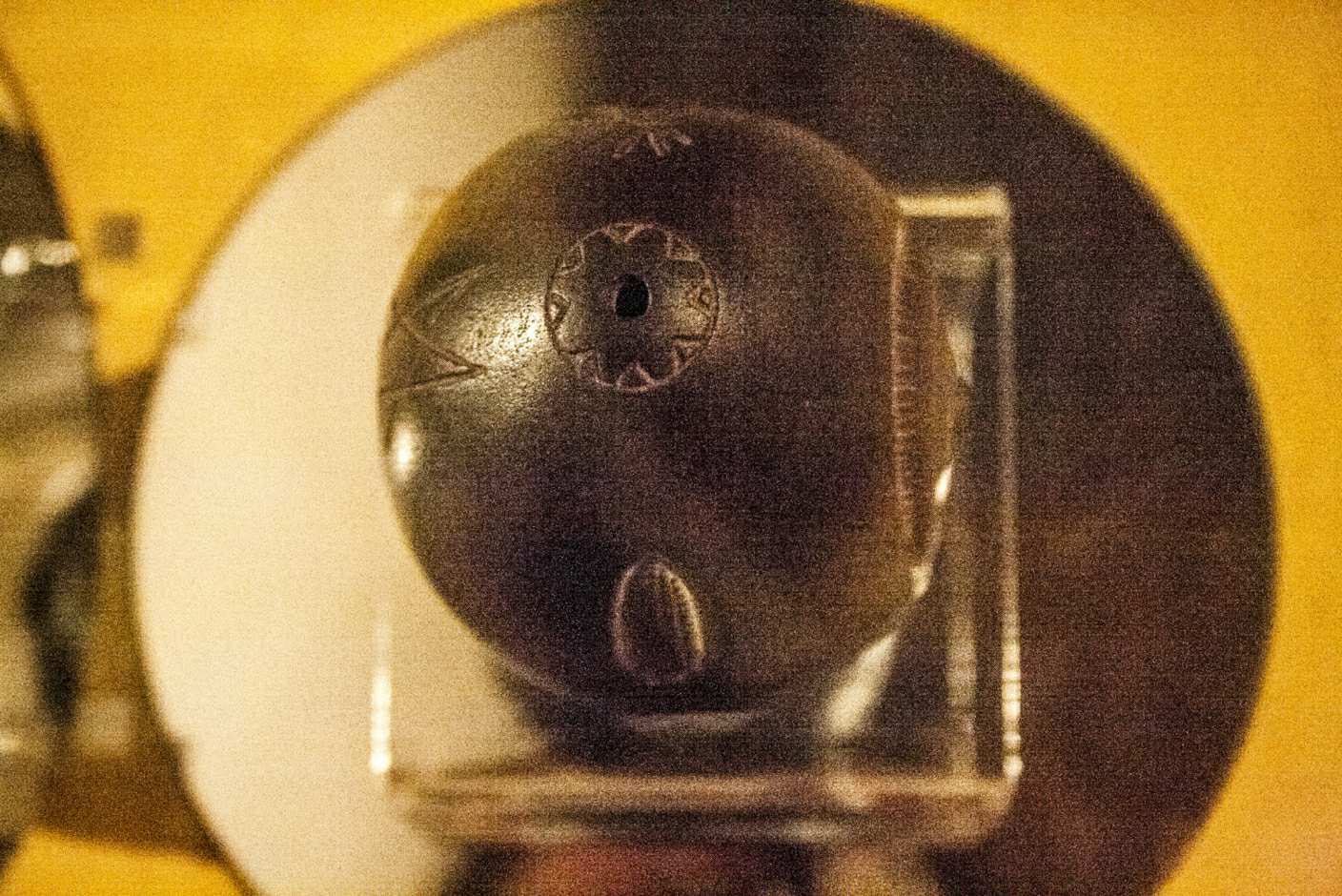The OOPArt are objects of which no one can explain the origin, which more often than not seem anachronistic compared to the historical moment in which they should be built. Other times they are inexplicable artefacts in every aspect, such that it is not possible to understand which civilization could have produced them. One of the most mysterious OOPart of all is the stone egg found in New Hampshire, near Lake Winnipesaukee. There are many hypotheses, no certain answers for an object of great beauty and infinite charm.
The mysterious stone

In 1872, a group of construction workers digging a hole to plant a fence post near the shores of Lake Winnipesaukee in New England. When they discovered a clay lump with a strange egg-shaped artefact inside it, six feet below the ground. Called the “Mystery Stone,” it is one of the most curious and least known relics ever found in New Hampshire. Many archaeologists have speculated about the possible origin of this strange object for more than a hundred years, without reaching any definitive conclusions so far.
The type of rock is not very familiar in the New Hampshire region and no other objects with similar markings or designs are known throughout the United States. It may have been the work of someone who lived in a very remote place and time, as nothing like this fine craftsmanship has been produced by the Native American tribes that inhabit the area.
Description of the mysterious stone

The mysterious stone is approximately 4 inches (10.2 cm) tall, 2.5 inches (6.4 cm) wide, weighs about 18 ounces (510.3 grams), and is very dark in hue. Hard as granite, its size and shape are those of a goose’s egg. The stone is a type of quartzite, derived from sandstone, or mylonite, a fine-grained rock formed by the transfer of layers of rock along a fault line. There are two separate holes made at both ends of the stone, the latter having been drilled from its tip to its base with tools of different sizes, and the interior of this drilling was subsequently polished along its entire length.
Beyond its strange design and structure, the smooth and polished surface of the stone is marked with extravagant engravings that range from astronomical symbols to a haunting human face. On one of its faces are engraved what appear to be inverted arrows, a dotted moon, a cross and a spiral. Another side features an ear of corn with rows of seventeen grains. Below it is a circle with three figures. One of them seems to be the leg of a deer and there is also some animal with large ears. On the third face, we can see a teepee with four posts, an oval and a human face. His face appears sunken, his nose does not protrude from the surface of the stone, and his lips seem to express a certain determination.
The native American theory
Immediately after the discovery, the stone remained in the possession of Seneca A. Ladd, the businessman who had commissioned the excavations along the shores of the lake. The newspapers spoke extensively of that strange object, and the American Naturalist attributed the authorship to the native Indians, who in this part of the Americas were the Abenaki. The initial idea was that it was some “trophy” that marked the end of hostilities between two rival tribes. But right away that theory did not convince others completely.

Until 1892 the egg-shaped stone remained on display at the Meredith Savings Bank, which had been founded by Ladd. When the latter died, his daughter Francis Ladd Coe inherited the object and in 1927 donated it to the New Hampshire Historical Society. Today the stone can be seen exhibited at the Museum of New Hampshire History and is surrounded by mirrors so that it is possible to observe all the engravings that are on its surface.
Controversial theories about its origin
Over the years, historians have tried to find some explanation for the existence of this stone and its possible purpose without reaching any clear conclusion to date. The initial interpretations started with the simplest answer. In November 1872, The American Naturalist magazine suggested that the stone “commemorates a treaty between two tribes.” However, this idea did not get very far, and soon after it was hypothesized that the stone could be some kind of ancient tool.
Other possibilities have also been raised, such as that the stone could be of Celtic or Inuit origin, and in 1931 a letter arrived at the New Hampshire Historical Society suggesting that it could be a “thunderstone.” Also known as “thunderbolts” or “thunder axes” (“lightning axes”), a lightning stone is a worked stone object, often shaped like a wedge blade of an axe, said or believed to have fallen from the sky. Stories of thunderstones are found in cultures all over the world and are often associated with a thunder god. The writer went on to say that such objects “always present the appearance of having been machine or hand-worked: frequently they come from deep in the earth, embedded in lumps of clay, or even surrounded by solid rock or coral.”
Are the holes too perfect?

Another interesting detail that is worth noting are the holes drilled at both ends of the stone are of two different sizes, both straight and not tapered. In 1994 an analysis of the holes in the stone was carried out, which indicated that the scratches in the lower hole suggested that it had been placed on a metal axis and had been removed several times.
In a 2006 Associated Press article, archaeologist Richard Boisvert suggested that the holes had been drilled by power tools from the 19th or 20th century. In his report, he wrote:
“I’ve seen a number of holes bored in stone with technology that you would associate with prehistoric North America. There’s a certain amount of unevenness and this hole was extremely regular throughout. What we did not see was variations that would be consistent with something that was several hundred years old.”
According to Boisvert, the holes are incredibly precise: a little too much to have been made with Native American tools. His conclusion was that the holes had been made in the 19th century and that the stone was nothing more than a very well made fake.
An egg-shaped stone that perhaps comes from very far away
We are left with a doubt that is difficult to resolve. Is the stone just a deception, made by a modern artisan? Or is it just an object that escapes the classifications that we are able to give on the basis of our knowledge? What seems to be excluded is the first hypothesis that was advanced, namely the Indian origin. The style of the Abenaki was very different from the nature of the stone, which, has rather characteristics similar to other civilizations.
Someone then thought that it may belong to an antecedent civilization that of the Native Americans, which lived in North America many millennia earlier. Not being able to date the artefact with any margin of certainty, this too remains a hypothesis not to be excluded. There are also those who speak of an object of extraterrestrial origin and, in all honesty, even this is not an idea to be rejected a priori.
The only thing that can be said with certainty is that the mysterious stone found around 150 years ago along the shores of Lake Winnipesaukee is an OOPArt (Out Of Place Artifact) because it should not have been where it was found.



